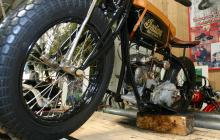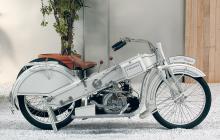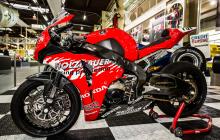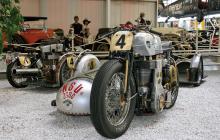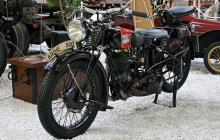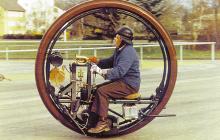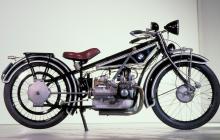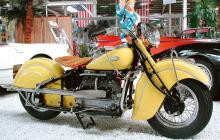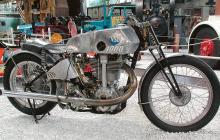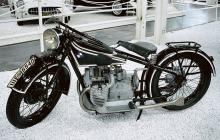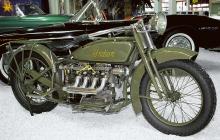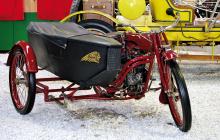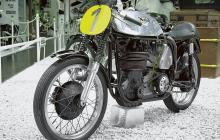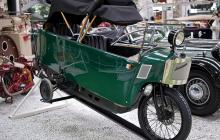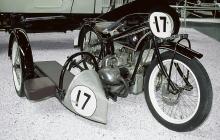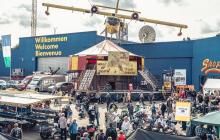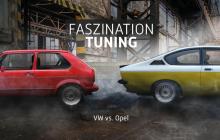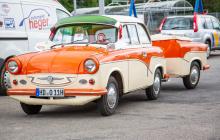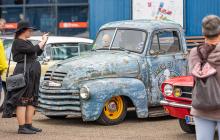Zündapp K 800
After the end of WWI the former "Zünder- und Apparatebau GmbH" of Fritz Neumeyer in Nurenberg began building motor cycles with the brand name "Zündapp" in 1921. The initial five motorbikes were copies of the British Levis. As of 1922 Zündapp began launching ideas of their own into series production. Neumeyer's plans were targeted at building uncomplicated motorbikes for the general people. His aim was to build a "bike for everyone", and he did succeed in this with a small bicycle with 2.25 hp-motor without gearbox installed in an inexpensive single-tube frame.
A two-speed-gear was to follow and, thanks to further improvements, these beginnings were leading to continually more efficient bikes for everyday use which could be sold in large numbers. Finally, the factory was in a position to focus its attention on the production of more powerful models.
Starting in 1933 they were building opposed 2-cylinder-flat engine-models with 400 ccm as well as a big 4-cylinder with 791 ccm. Sectional steel frame and cardan shaft drive were introduced together with these models. The sales figures, however, continued to be dominated by the smaller bread-and-butter models with rear wheel chain. A 750 ccm sidecar bike with sidecar-drive and reverse gear was built for the army.
As with most other motorbike factories which had managed to survive the war in reasonably good shape, things also quickly began to pick up at Zündapp after 1945. Once more it were the ordinary models that brought profitable sales figures. As a motor-bike-sidecar-combination (Green Elephant) the 600 ccm Type KS 601 with the improved prewar-ohv-flat engine was a great success in racing sport and as a touring bike. Zündapp engaged in sports for many years and won many titles with their small 50- and 80 ccm-bikes. The Nurenberg factory closed down in 1958, the plant in Munich in 1984. Production equipment was sold to China.
The Zündapp Type K 800 was built from 1933 through 1938 in Nurenberg. The u-head opposed 4-cylinder-flat engine produced 20-22 hp at 4,8000 rpm. Further essential features were the 4-speed ball gear with chain and sprechet drive, the soctional moulded steel frame and the cardan drive. The K 800 was mainly used as a sidecar- combination rather than a soloinke. With a weight of 230 kilograms the motorcycle could reach a top speed of 125 km/h at a consumption of 5 liters / 100 km (47 mpg) as a solo bike.

